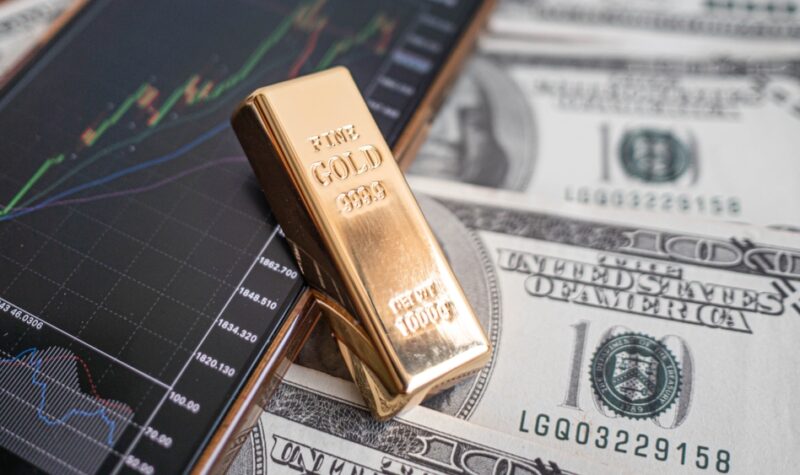Why Gold, Why Now?

During times of economic uncertainty and geopolitical instability, gold historically performs well. It is viewed as a reliable store of value and offers hedging opportunities. Gold plays a key role in diversification due to its low correlation with other asset classes, which strengthens portfolios, especially during periods of market volatility.
Whilst gold has seen an increase of almost 2000% (1929.16%) over the past 50 years, numerous global and domestic crises have been a catalyst for gold making more dramatic gains.
Here, we look at key historical periods where gold outperformed and consider how today’s economic and geopolitical landscape compares.
The UK’s 1970s Economic Nightmare: A Boon for Gold
In the UK, the 1970s were characterised by very high and persistent inflation, which peaked at an eye-watering 24.2% in 1975. The two major oil shocks of the era were triggered by geopolitical events in the Middle East and led to significant price increases for petrol and oil, contributing to the inflationary pressures of the decade. In the UK, it was a period of rising wages, political instability, powerful trade unions, and industrial action, which culminated in the Winter of Discontent in 1979. Against this backdrop and a growing lack of confidence in fiat currency and government economic policy (both domestically and globally), gold prices skyrocketed by over 1600%, increasing from £14.63 at the start of the decade to £251.12 on the first trading day of 1980.
Gold’s Role During the 2008 Financial Crisis (aka the Great Recession)
The 2008 financial crisis is a bit of a misnomer. The cataclysmic chain of events of the era began in early 2007 with the Subprime Mortgage Crisis. According to the National Bureau of Economic Research, the recession started in December 2007 and ended in June 2009. In 2008, the FTSE 100 dropped 31%, the worst annual performance since its 1984 inception. From 2007 to 2012, banks failed, fears of sovereign debt defaults escalated, property markets crashed, and central banks flooded the system with liquidity. Meanwhile, gold rose by 126%.
Gold Resistance During the COVID-19 Pandemic
In January 2020, COVID-19 was declared a Public Health Emergency of International Concern. It was estimated that the global deaths attributable to the pandemic in that one year were at least three million; however, this was thought to be a significant undercount. The pandemic completely changed lives around the world. The ramifications on global markets were huge. In the UK, the FTSE 100 crashed by over 34% in the first few months of the year. The ensuing economic uncertainty drove collectors and investors towards gold as a safe haven.
The Royal Mint reported on how gold performed the best of the three asset classes – stocks, bonds, and gold – in 2020, and highlighted that, by August of 2020, global demand for gold had surged to the point where its price hit a record high of £1,550 per ounce ($2,030).
What is the Current Economic and Political Landscape Looking Like?
Today, economic risks and geopolitical uncertainty continue to dominate the headlines. Persistent inflation, Trump’s tariffs, and other trade barriers are slowing global growth; there’s an increasing trend towards de-dollarisation, and international tensions are running high with active conflicts at the highest level since the end of World War II.
Inflation remains elevated in many regions, including the UK, where it has risen to 3.6% in the 12 months to June 2025 (CPI is up 0.3% in June 2025, compared with a 0.1% rise in June 2024), which is well above the 2% target rate. The cost of living continues to rise, making gold a more attractive option for those looking to preserve their wealth.
On July 13th, 2025, The Telegraph reported that the probability of an economic downturn in the US had jumped to a five-year high after the impact of trade wars began to hit households. According to Moody’s, the probability of the US economy falling into recession over the next 12 months has soared from 33.2% in March to 47.6%, the highest reading since April 2020, when the US economy was heavily impacted by the pandemic. The UK economy unexpectedly shrank by 0.1% in May after also contracting in April. This all suggests that we are in another period of structural uncertainty.
Geopolitical tensions remain elevated, and confidence in central banks and fiat currencies is still low. After a lull in April, central bank gold buying has resumed. According to the annual Invesco Global Sovereign Asset Management study, almost half of central banks expect to increase their gold holdings over the next three years.
Solomon Global: Why Gold Now?
History shows that gold tends to thrive in uncertain times. At Solomon Global, we believe the case for gold remains strong; the broader narrative remains unchanged, with the macroeconomic and geopolitical landscape remaining fragile.
The latest poll by the London Bullion Market Association (LBMA) reveals that metals analysts are increasingly bullish on gold, forecasting 15% higher prices on average through 2025. With prices having eased slightly from the all-time high of April 22nd, 2025, investors now have a window to reassess their exposure before the next potential upswing.
Comments (0)